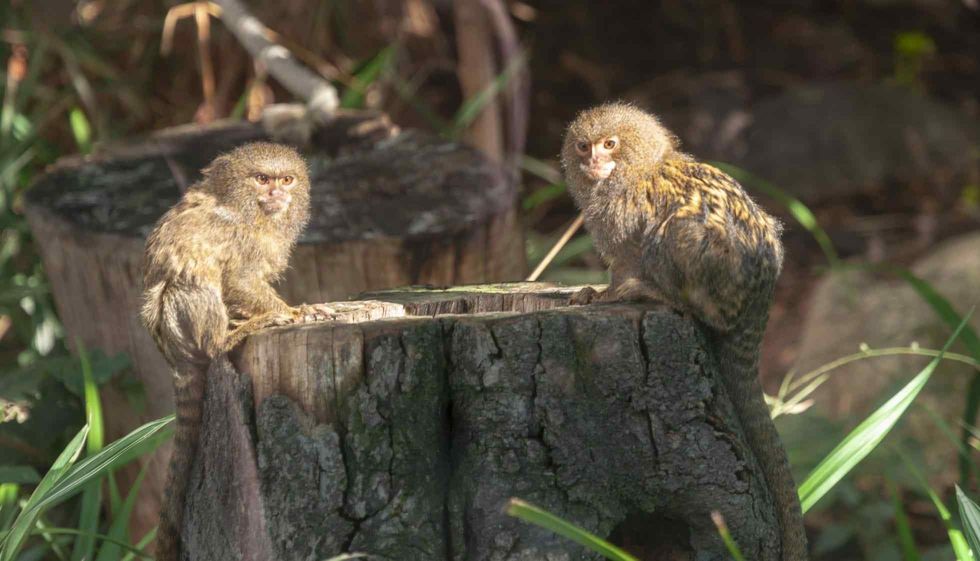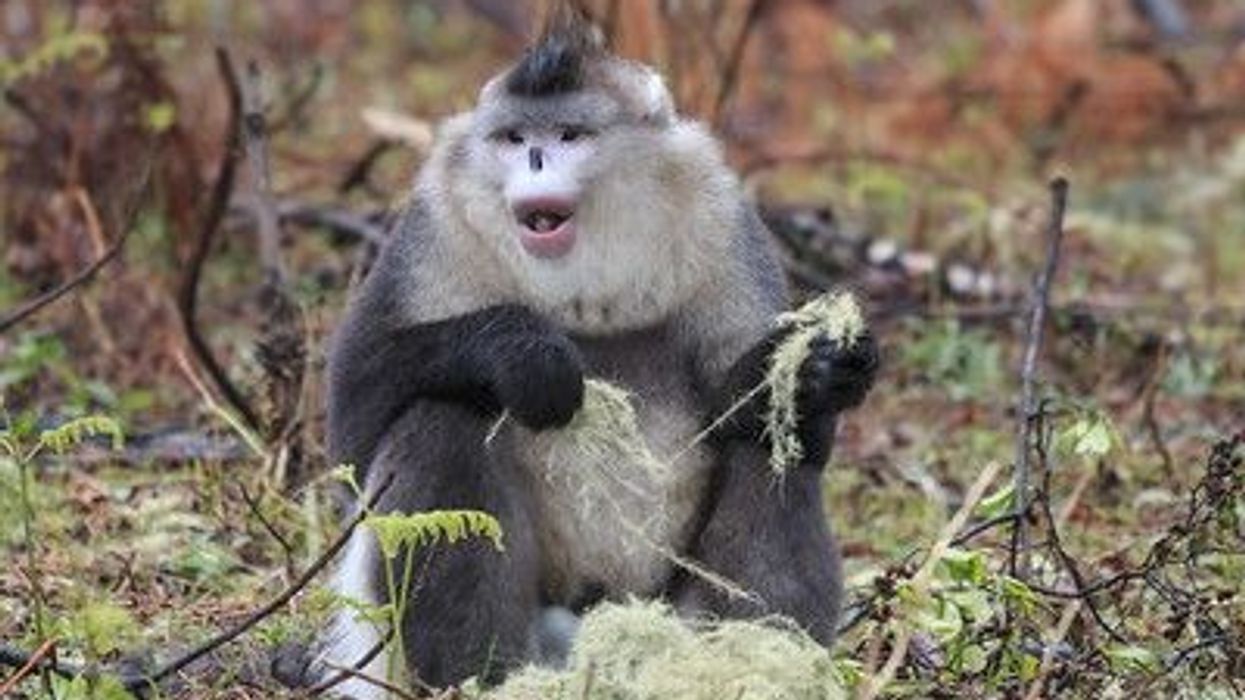Pygmy animals are those animals who resemble the traits and features of their breeds but are extremely smaller in size. Pygmy Marmoset is one of the most well known small monkey breeds.
In scientific community they are known as pygmy marmoset (Cebuella pygmaea). This tiny monkey is also known as ‘pocket monkey’, ‘finger monkey’, ‘ thumb monkey’ are tiny and the smallest monkeys which are found in the Amazon basin in the forests of South America. These finger monkeys are cute and very beautiful.
Their small body makes them look more interesting. These creatures are very intelligent and they live in troops.
Pygmy Marmosets are intelligent, cute and small monkeys. As they are wild animals, proper training becomes a necessity.
If in the initial five years of their life they are provided enough training, then they can be the best pet. The adult pygmy marmoset are aggressive and if you provide them with proper training then their aggressive behavior can be controlled.
Here are some more interesting pygmy marmoset facts for kids. After you have gone through these pygmy marmoset fun facts, do check out the interesting information on woolly monkey and squirrel monkey.
Pygmy Marmoset Interesting Facts
Pygmy marmosets are the tiniest monkeys in the world. These creatures live on the trees or thickets of bamboo, and they eat small animals and insects for their survival. These monkeys are full of interesting facts and here are some more interesting facts about these cute little monkeys.
What type of animal is a pygmy marmoset?
A pygmy marmoset is a small monkey breed which is found in the Amazon Basin, South America. It is one of the smallest monkeys known to exist.
What class of animal does a pygmy marmoset belong to?
A pygmy marmoset belongs to the mammal class.
How many pygmy marmosets are there in the world?
There are many pygmy marmosets which can be found in the Amazon basin. The exact number of their population is not available but currently the species is not endangered but due to excessive habitat destruction, their number is decreasing now.
Where does a pygmy marmoset live?
Pygmy marmosets live in groups the forests of South American countries such as Brazil, Bolivia, Colombia, Ecuador and Peru.
What is a pygmy marmoset's habitat?
Pygmy marmosets live in the amazon region of South America. They live in groups including babies and adults both. The pygmy marmosets make their habitat on the trees or thickets of bamboo, generally alongside the river and floodplains.
Who do pygmy marmosets live with?
Pygmy marmosets generally live in groups which is known as the troop. It comprises of several adults and babies.
How long does a pygmy marmoset live?
The average pygmy marmoset lifespan in 12 years.
How do they reproduce?
They reproduce through sexual reproduction.
What is their conservation status?
Their conservation status currently is of 'Least Concern', but due to excessive habitat destruction, their population is decreasing.
Pygmy Marmoset Fun facts
What do pygmy marmosets look like?
Pygmy marmosets are small monkeys, which have a long tail and small body. They are orange brown in color. They have brown fur on their skin. Their hair has a stripe of black and brown color which is also known as agouti coloring.
How cute are they?
These little creatures are tiny, and this makes them look cute.
How do they communicate?
Pygmy marmosets have different types of methods to communicate with one another. They use cryptic calls, when their members are near, and these calls are also easily detected by those members who are quite far from the pygmy who is sending the calls.
How big is a pygmy marmoset?
Pygmy marmosets are tiny creatures and they are almost the size of a squirrel, but they are 2 times bigger than the size of a sparrow.
How fast can a pygmy marmoset run?
Pygmy marmosets are pretty fast when it comes to running. These small creatures run almost with a speed as that of a squirrel which runs at a speed of 12 mph.
How much does a pygmy marmoset weigh?
A pygmy marmoset weighs between 0.24-0.26 lb.
What are their male and female names of the species?
There is no special name for their male and female species. A male pygmy marmoset will be called a male pygmy marmoset and a female is called female pygmy marmoset.
What would you call a baby pygmy marmoset?
There is no special name for an offspring of pygmy marmoset, the babies of a pygmy marmoset will be called 'infants’.
What do they eat?
Pygmy marmosets diet comprises of invertebrates and plant exudates such as latex, gums and other such things. The infants also consume the same diet.
Are they loud?
Yes, they can be very loud. When pygmy marmosets communicate, they make shrill and high-pitched sounds, that can be heard from afar.
Would they make a good pet?
These little fellows make for interesting exotic pets if you provide them with proper training. They can adjust well to new surroundings but, as a pet, they will need a lot of care and attention, plus protection from predators like eagles, hawks, and other similar birds.
Did you know...
Are pygmy marmosets hard to take Care of?
Pygmy marmosets are wild animals and it becomes really challenging to keep such animals as a pet. These animals need proper environment for their living and that’s why the owner has to spend a lot on arranging the ideal habitat for their pet pygmy marmoset.
Also, pygmy marmosets must be brought as a pair and single pygmy marmoset price range starts around $1500 and the range can go up to $8000.
Can a pygmy Marmoset Bite?
Pygmy marmosets can bite the individual if they think that they are being harmed or threatened.
Are pygmy marmosets aggressive?
Yes, these tiny monkeys can get aggressive. Many a times, in the forest, the pygmy marmosets fight with each other with their flat nails and sharp claws which indicates that they might show aggression.
Can pygmy marmosets be toilet trained?
Most wild animals are difficult to train and when it comes to training monkeys, this task becomes nearly impossible. Training a pygmy marmoset is not a piece of cake, and when it comes to toilet training, most tiny monkeys exhibit reluctance.
How often do pygmy marmosets eat?
Pygmy marmosets, at 3 weeks of age, are required to be given food after every two to three hours. It is important to feed these tiny monkeys on time.
What is the gestation period of pygmy marmoset?
Female pygmy marmosets give birth to a baby pygmy marmoset 'offspring' after a gestation period of 134 days.
Can you have a pygmy marmoset as a pet?
It is completely legal to keep a pygmy marmoset as a pet in 20 states of the USA. Before deciding to keep a pygmy marmoset as a pet, you must check the legalities in your state.
But as these animals might show aggression, they need proper training and grooming. Also the owner needs to be an expert in handling such animals. Here are some important things which you need to know before keeping a cute pygmy marmoset as a pet.
You need to provide them with an environment similar to that of a forest. You need to provide them a habitat that resembles their original habitat.
For this, you can add a water source, trees, vines. Direct sunlight will be ideal but if you can’t arrange an outside habitat then you can add a heat lamp or any other artificial source of light. A good habitat will give your pet pygmy marmoset a familiar environment, enabling it to live happily.
These tiny monkeys have a natural habitat of living in troops which means that if you are buying a pygmy marmoset, then you have to buy them in pairs, because these little fellows will not like individual human companions.
Pygmy marmoset cost: keeping a pet pygmy marmoset is not affordable for all, the pygmy marmoset price starts from around $1500 and can go up to $8000 including the necessary stuff needed for pygmy marmosets.
Pygmy marmoset diet: when you decide to keep a wild animal as a pet, then it should be well kept in mind that these tiny monkeys will need a lot of care, attention and a proper diet.
You need to provide them with a well-balanced diet and it should have the food items on which they used to prey on.
What is unique about the pygmy marmoset?
Pygmy marmoset is the world’s smallest monkey, and they are cute, intelligent and fast. These tiny monkeys can also be a good pet if the owner is patient enough with such animals.
Habitat loss and pygmy marmoset
Humans have now become the most dangerous threat to these new world monkeys. Humans are destroying forests at a very huge rate and this causing a heavy habitat loss for these pygmy marmosets.
Their population is not endangered yet, but if humans continue to destroy their habitat at this rate then one day their population might become endangered. So, there is a need to create awareness about this. If their habitat is destroyed, then our future generations will never be able to see this beautiful species for real.
Here at Kidadl, we have carefully created lots of interesting family-friendly animal facts for everyone to discover! Learn more about some other mammals including patas monkey, or masked palm civet.
You can even occupy yourself at home by drawing one on our Pygmy Marmoset coloring pages.










